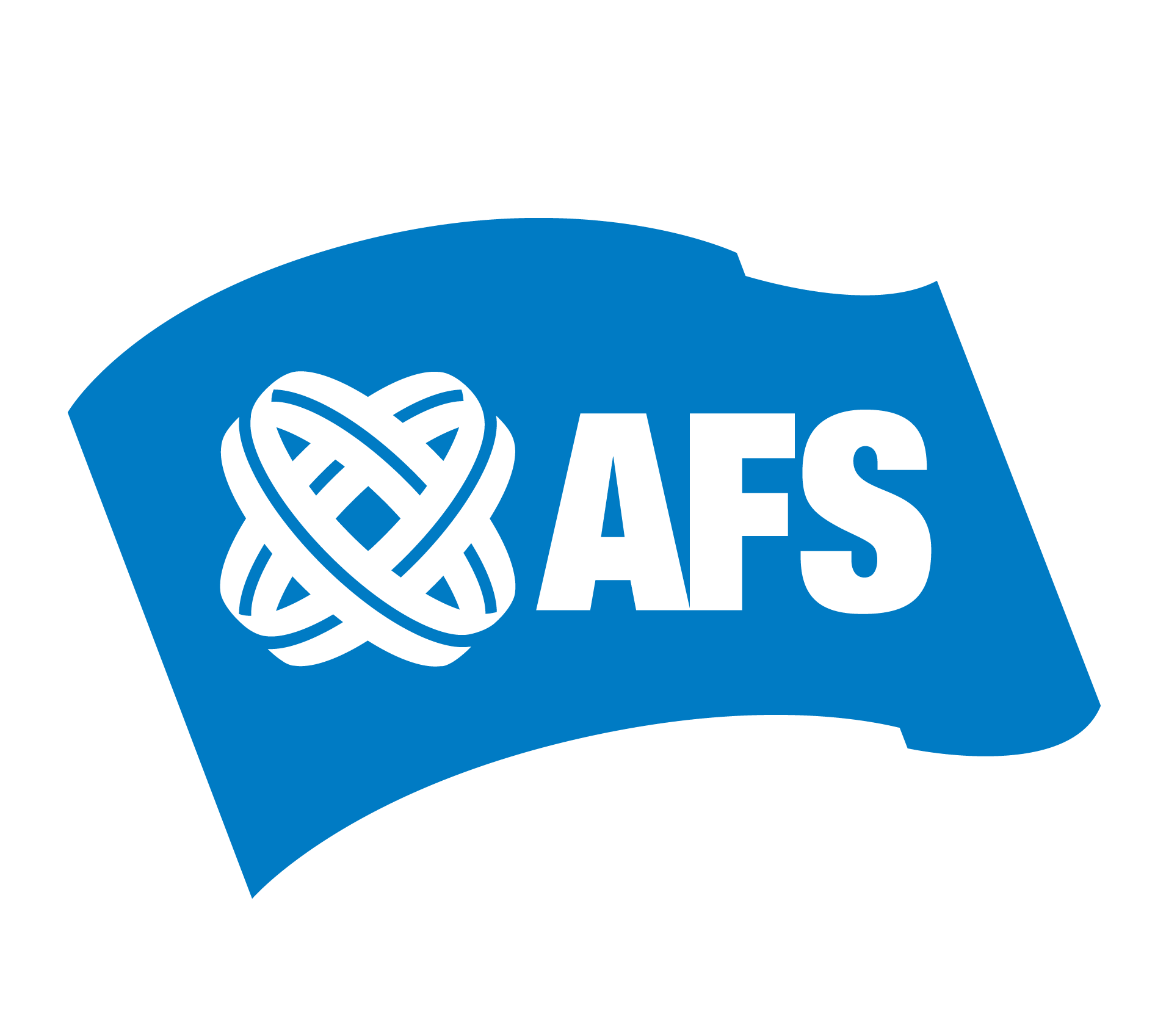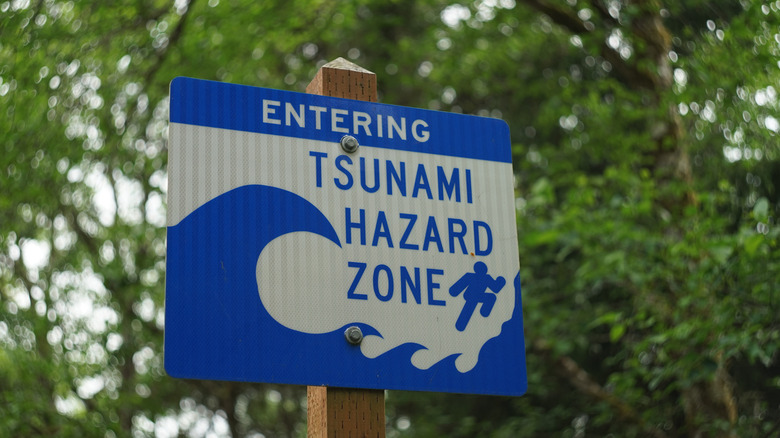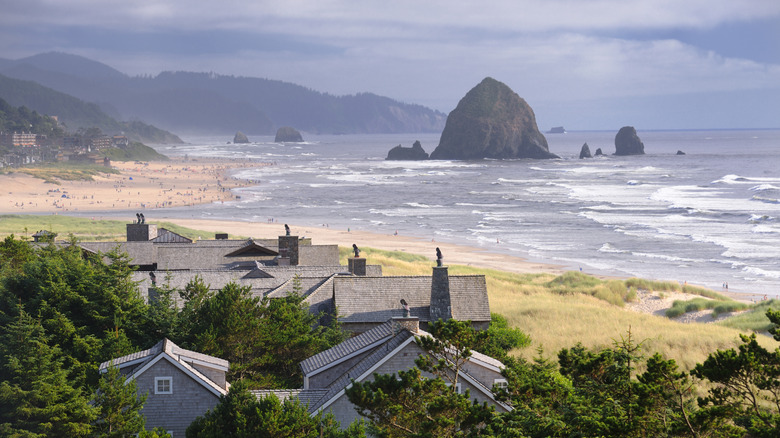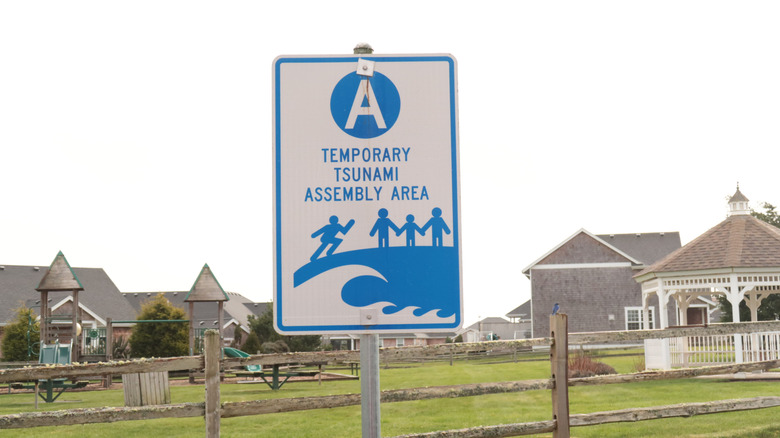Few things interrupt the blissful calm of vacation mindset like coming face to face with a tsunami evacuation sign during your beach getaway. A desperate stick figure scrambles up an incline as a towering wave barrels forward, while “Tsunami Hazard Zone” appears in unmissable letters. Along the Oregon Coast, you’ll find these signs (and many others like them) in abundance.
These signs are part of Tsunami Outreach Oregon, a community-driven program aimed to raise awareness about tsunami and earthquake safety and increase survival odds in the event of a tsunami. Signs identify streets within the tsunami inundation zone and roads leading to safe areas or mass gathering points. And, while it’s unlikely a tsunami will impact your next vacation at Cannon Beach or another Oregon coastal playground, it’s important to be prepared and know the risks.
The Oregon Coast is prone to tsunamis due to its location along the Cascadia Subduction Zone (CSZ), a 700-mile-long “megathrust” fault that runs offshore from British Columbia to northern California. Most of the time, tectonic plates move incredibly slowly and harmlessly, but every once in a while they become stuck, releasing a massive amount of energy in the form of an earthquake when they break free. When this happens along a seafloor, it can then trigger a tsunami. The more stress and tension accumulate along the Cascadia Subduction Zone, the larger the earthquake and tsunami will be.
How common are tsunamis in Oregon?
Oregon has a 37% chance of experiencing an earthquake of 7.1 magnitude or greater and a subsequent tsunami sometime in the next 50 years, according to the Oregon Department of Emergency Management. If an earthquake originating in the Cascadia Subduction Zone reached a magnitude of 9.0 or greater, the resulting 100-foot tsunami would likely hit the Oregon Coast within just 15 to 20 minutes.
The last major earthquake along the Cascadia Subduction Zone occurred in 1700 with a devastating magnitude of 9.0. Indigenous oral history published in 2005 in Seismological Research Letters describes massive saltwater flooding and a force so strong “people could neither stand nor sit for the extreme motion of the earth.” There’s no precise record of how many people died in the earthquake of 1700, but the devastation was extensive. “The next one might not be for another 100 years or even 200 years,” Ed Nissen, a researcher at the University of Victoria, told CTVNews. “But it’s also true to say it could happen tomorrow.”
The type of tsunami caused by the Cascadia Subduction Zone or another nearby fault is defined as “local” due to the earthquake’s close proximity. However, Oregon can also experience “distant” tsunamis, which travel across the ocean and give people more time to escape. For instance, in 1964, a magnitude 9.2 earthquake occurred in Alaska, causing a tsunami to race across the ocean at 500 mph before inundating Cannon Beach and other coastal communities.




